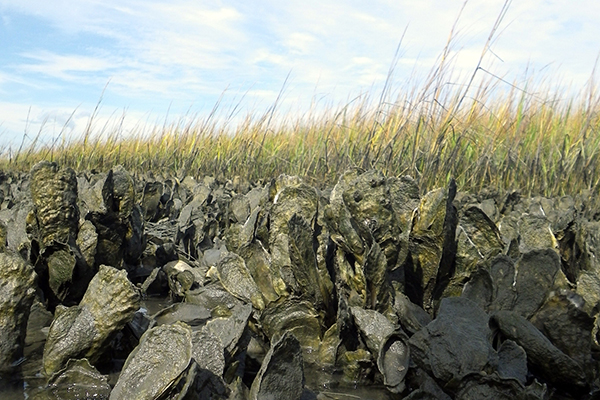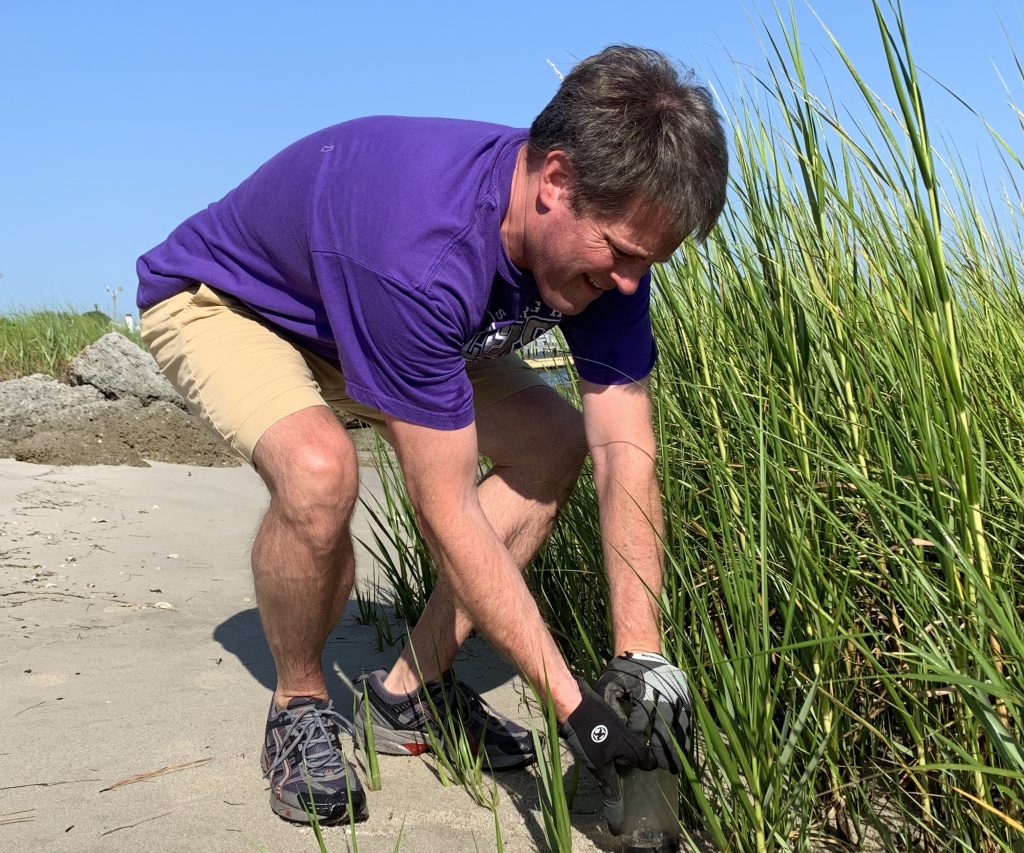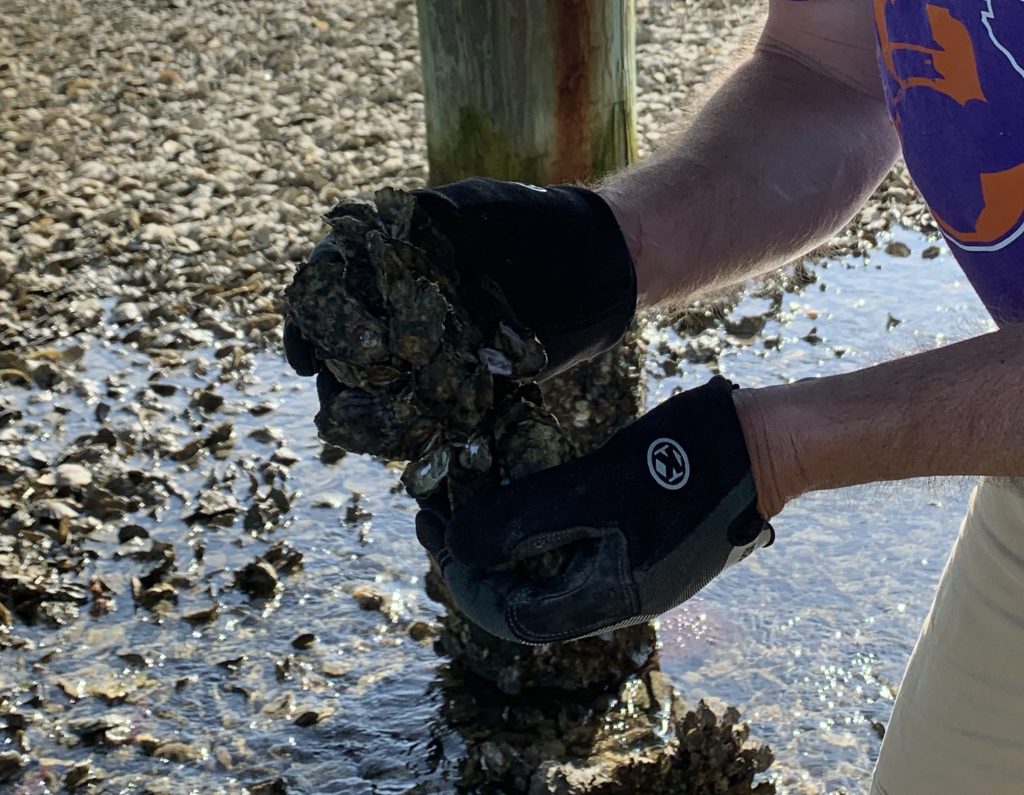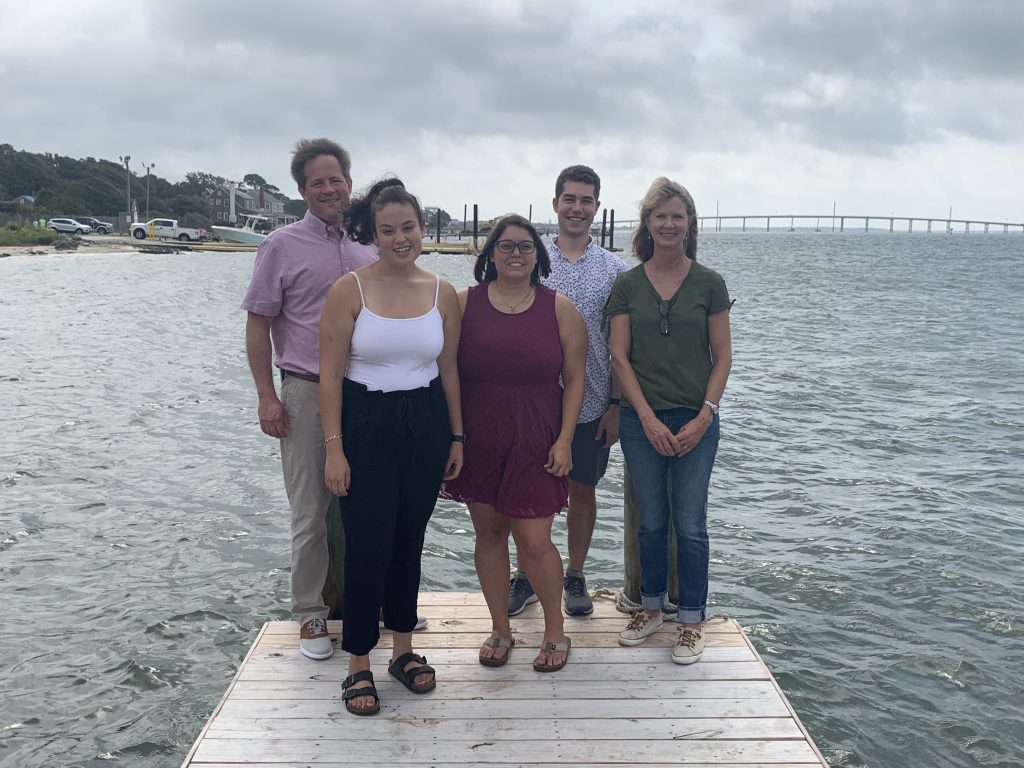Piehler Lab to examine the role of oysters in new studies
August 30, 2019
Each year, Americans slurp up 2.5 billion oysters. They’re an important part of coastal cuisine, and in North Carolina alone the fishery is worth about $4 million dollars. But there’s more to the acclaimed Eastern oysters than meets the eye. They’re plenty tasty, but they’re also important contributors to estuaries and coastal communities.
The benefits that humans obtain from functioning ecosystems such as oyster reefs are called ecosystem services. A 2012 study — co-authored by researchers from UNC’s Institute of Marine Sciences (IMS) — estimates that an oyster reef has an average value of $10,325 per hectare per year without considering its harvest value. (A hectare is roughly 2.5 acres.) Lead author, Jon Grabowski earned his Ph.D. under “Captain of the Coast” Pete Peterson, a researcher at IMS.
These benefits include water filtration, denitrification, shoreline stabilization, and commercial fish habitat. Oysters are referred to as ecosystem engineers and, similar to a coral reef, produce a complex habitat for fish species and other marine creatures. But unlike corals, oysters are known for their toughness and ability to survive in a variety of conditions.
But despite their fortitude, wild populations in the Gulf and on the Atlantic coast have plummeted in the past 200 years. Overfishing, disease, and habitat loss have all contributed to historically low catches, and coastal ecosystems and communities are suffering as a result.
Michael Piehler, director of the Institute for the Environment and head of the IMS’ Piehler Lab, has researched oysters for 15 years. His lab was responsible for discovering the extent to which oysters remove nitrogen from their environment, a process that represents 40 percent of their total value to humans. The lab has recently begun work on two research projects to further understand oysters’ role in the nitrogen cycle.
Without these beneficial bivalves, nitrogen may build up in the sediment and water column and cause harmful algal blooms and fish kills. Protecting oysters and their ability to maintain the nitrogen cycle is a critical part of conserving healthy estuaries and water quality.
In collaboration with scientists at East Carolina University and William & Mary’s Virginia Institute of Marine Science, the Piehler Lab is working on a project led by the City of Jacksonville to restore oysters to the New River and its estuary through the North Carolina Oyster Highway. The New River estuary is downstream of major agricultural and industrial developments, and the hope is that reintroducing them will improve water quality and bring nutrient levels down to acceptable levels.
But to repopulate the New River, young oysters — known as spat — need a stable environment to settle and grow. They would usually come to rest on existing reefs, but since these spat are pioneers in a reef-less expanse, a stand-in substrate is necessary. Hence the Oyster Highway, which provides an avenue for repopulation by seeding the river bottom with blocks of cement or oyster shells. It’s assumed that reintroducing oysters here will improve water quality, but for the Piehler Lab, assumptions just aren’t good enough.
“People get excited about novel solutions. And oysters, when you think about win-win, are close to that category,” Piehler says. “But it’s important to be clear and specific about what they’re doing.”
Over the next few years, the lab will analyze water quality changes in the New River, how oysters modify the nitrogen cycle, and where in the estuary ecosystem services are maximized.
“A big part of the mission is trying to understand natural systems and their use to people,” Piehler says. “Oysters are a really neat example of that, and a timely example because they are now much more clearly regarded for all the value that they have.”
But are all oysters equal? Maybe not — and that’s another question the lab is trying to answer.
Aquaculture is essential to many oyster fishers, since struggling wild populations cannot sustain demand alone. These farmed oysters are often put in floating racks or cages on the estuary bottom, and so do not form reefs or interact with their environment in the way that wild oysters do.
The Piehler Lab wants to find out if farmed oysters using different culturing techniques contribute to denitrification in sediments as well as their wild counterparts — an important thing to consider when assessing total impact.
“There are layers and layers of needs for new information,” he says.
Although awareness about the benefits oysters bring to humans is on the rise, the same can’t necessarily be said about wild populations. Recovery has been slow, and environmental change and disease are pushing back.
Piehler’s research, and research in labs beyond Carolina, is making it easier to understand the importance of oysters beyond the plate.
“A lot of people can get behind oysters. And I think it’s because of all the things they do and the fact that people love to eat them,” Piehler says. “They’re clearly not beautiful, and they’re quite sharp, and they kind of smell, but they’re a really useful part of the coastal landscape.”
For more information on oyster research see Piehler’s lab web page.
Story by Annie McDarris ’20
Annie McDarris a graduate student within the School of Media and Journalism as part of the Environment & Science Communication Dual Degree Program. She completed her bachelor’s degree in environmental studies in May 2019 and is working as a communications intern this summer with the UNC Institute for the Environment. After she graduates, McDarris plans to continue writing about environmental issues, particularly on the topics of conservation and water quality.



